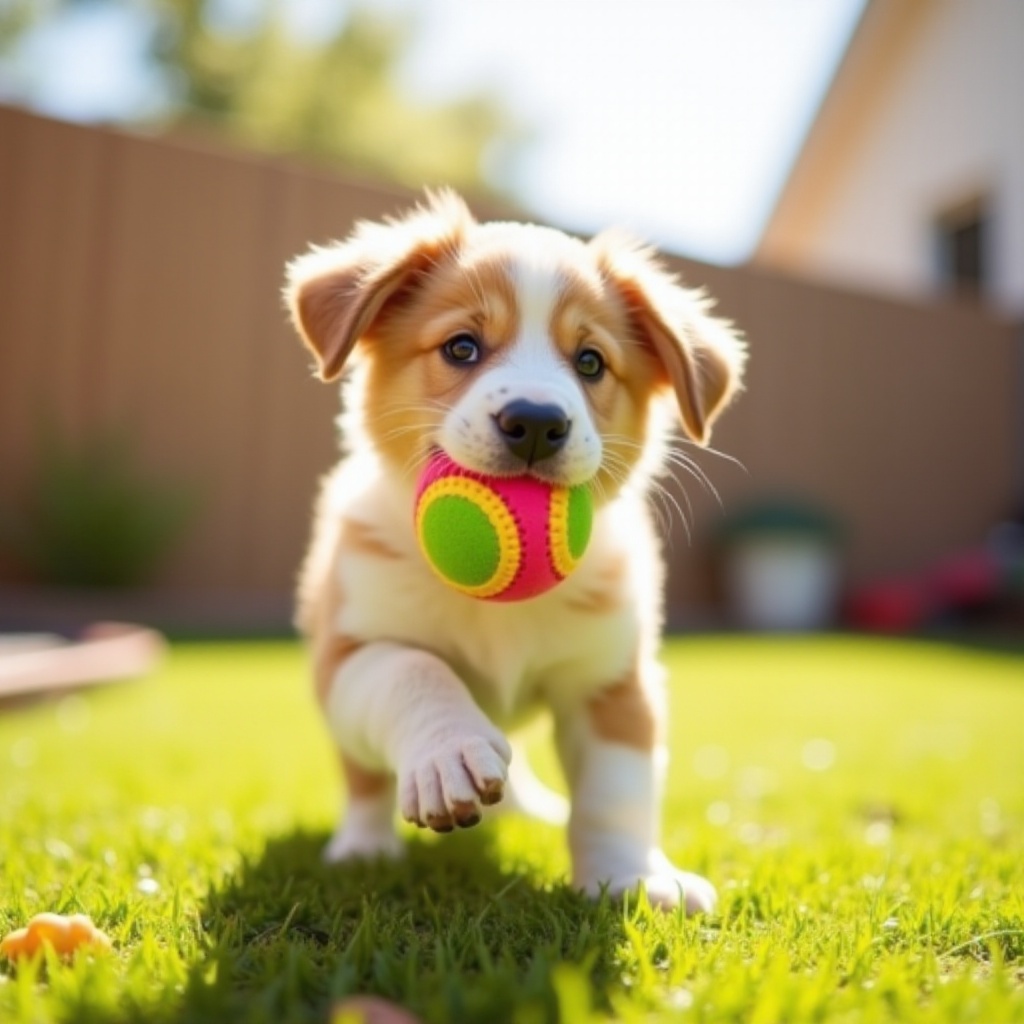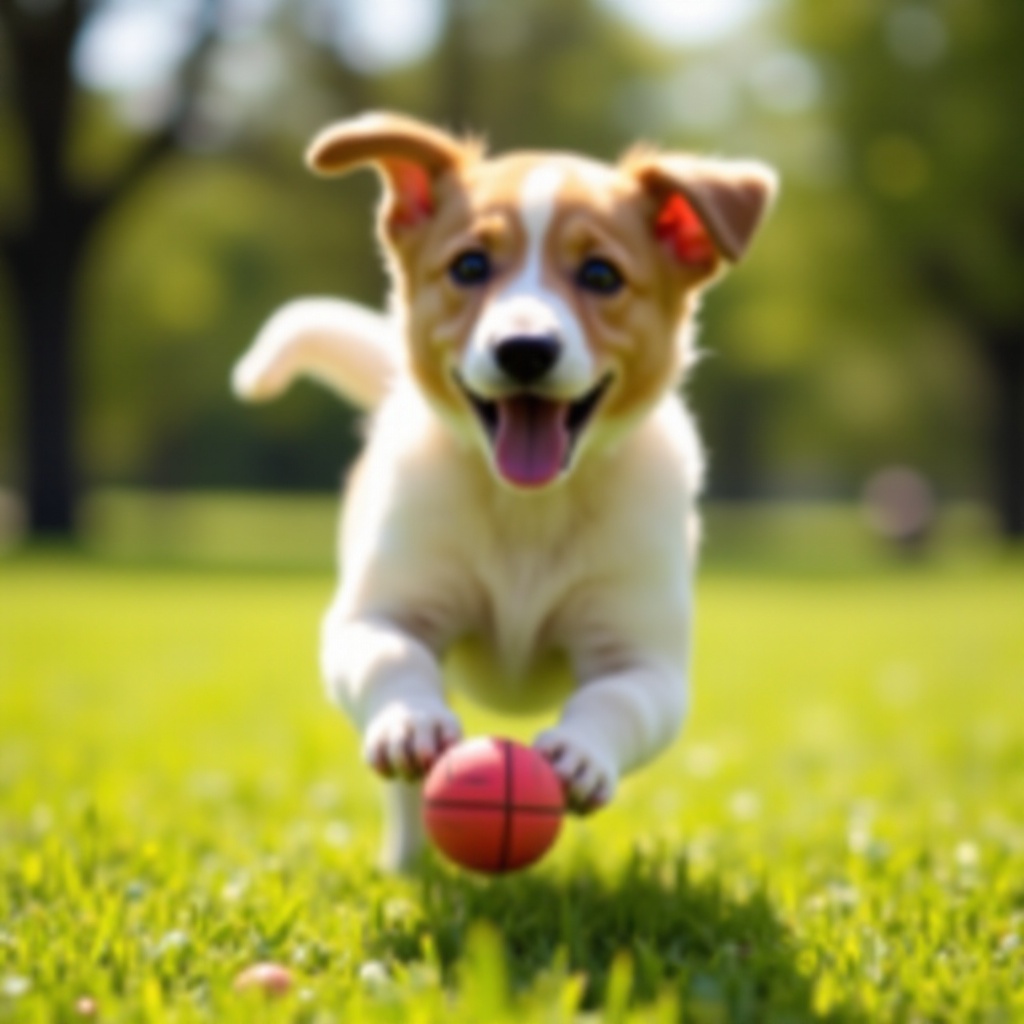Introduction
Fetching a ball is one of the most rewarding activities for both a puppy and its owner. Not only does it provide great exercise, but it also strengthens the bond between you and your furry friend. Whether you have a new puppy or an older dog that has never learned this classic game, teaching fetch can be fun and easy with the right approach. This guide will walk you through the preparations, basic commands, training methods, and tips to overcome common challenges, ensuring your puppy learns to fetch in no time.

Preparing for Fetch Training
Before diving into fetch training sessions, it’s important to prepare adequately. Having the right equipment and mindset will set you and your puppy up for success.
- Equipment: You’ll need a fetch toy, preferably a soft ball or a small, light frisbee that’s easy for your puppy to pick up. Avoid toys that are too hard or too large, as they can be intimidating for a puppy.
- Environment: Choose a quiet, distraction-free area for your training sessions. Your backyard or a local park during off-peak hours can be excellent choices.
- Puppy’s Health: Ensure your puppy is healthy and has had sufficient rest before beginning any training. An overexerted or tired puppy will be less inclined to cooperate.
- Positive Reinforcement: Prepare treats and praise to reward your puppy. This will encourage them to repeat the desired behavior.
With these preparations complete, you’re ready to lay the groundwork with basic commands that will ease the fetch training process.
Basic Commands Before Fetch
Understanding basic commands such as ‘sit’ and ‘stay’ can significantly smooth the fetch training process. These commands will give you better control during training sessions.
- Sit: Start by having your puppy sit before you throw the ball. This helps in calming them down and ensures that they focus on the next step.
- Stay: Teaching ‘stay’ is crucial, as it helps your puppy understand that they need to wait for your signal before fetching the ball.
- Come: This command is essential for getting your puppy to return to you with the ball. Make sure your puppy is confident with ‘come’ before moving on to fetch.
Taking the time to practice these commands will make the subsequent fetch training much easier.
Teaching the Fetch Command
Now comes the core of this guide—teaching your puppy to fetch. Follow these steps to make the process straightforward and enjoyable.
- Introduce the Ball: Start by letting your puppy get familiar with the ball. Offer it to them, let them sniff it, and reward them with a treat for showing interest.
- Throw Short Distances: Begin by tossing the ball a short distance. Use a cheerful voice to encourage your puppy to retrieve it. Most puppies will naturally run after the ball.
- Reward Fetching: When your puppy picks up the ball, praise them enthusiastically. Use treats and affection to reinforce that picking up the ball is a positive action.
- Call Back: Use the ‘come’ command to call your puppy back to you once they have the ball. Initially, they might not come back straight away. Be patient and reward them when they eventually do.
- Trade for Treats: If your puppy is reluctant to give the ball back, offer a treat in exchange. This can help them understand that returning the ball is part of the game.
- Repeat: Consistency is key. Repeat these steps, gradually increasing the distance of your throws as your puppy becomes more confident in the game.
With patience and positive reinforcement, your puppy will learn to love fetching the ball.
Overcoming Common Challenges
While teaching your puppy to fetch, you may encounter some common obstacles. Here are solutions to handle them effectively.
- Refusal to Fetch: If your puppy doesn’t chase the ball, try using a different toy or adding a little scent to the ball to make it more enticing.
- Not Returning the Ball: Some puppies will run after the ball but won’t bring it back. In such cases, use the ‘come’ command and reward them for returning, even if they don’t bring the ball at first.
- Drop or Chew the Ball: If your puppy drops or chews the ball rather than bringing it back, make sure to praise and treat them only when they properly retrieve the ball to you.
By addressing these challenges with patience and consistency, you can ensure successful fetch training sessions.

Making Fetch Sessions Fun and Safe
Ensuring that your puppy finds fetch both enjoyable and safe is crucial for long-term success.
- Keep Sessions Short: Puppies have short attention spans. Limit training sessions to around 10-15 minutes to keep your puppy engaged.
- Mix It Up: Variety can make training more exciting. Change the environment or the toy occasionally to keep things interesting.
- Stay Supervised: Always supervise your puppy during fetch to prevent accidents or overexertion.
- Monitor Health: Keep an eye on your puppy’s health during sessions. Look out for any signs of fatigue or overheating and take breaks as needed.
Making these considerations a part of your training routine will ensure your fetch sessions are fun and safe for your puppy.

Conclusion
Teaching your puppy to fetch a ball is a rewarding experience that strengthens the bond between you and your pet. With the right preparations, basic commands, and patience, your puppy will soon master the fetch command. Remember to make sessions enjoyable and safe to keep your puppy enthusiastic about the game.
Frequently Asked Questions
How long does it take to teach a puppy to fetch?
The time it takes to teach a puppy to fetch varies based on the puppy’s age, breed, and previous training. Generally, consistent training over a few weeks yields the best results.
What should I do if my puppy won’t bring the ball back?
If your puppy won’t bring the ball back, use the ‘come’ command and offer treats for returning. Gradually, they’ll understand that fetching and returning the ball leads to rewards.
Can fetch be harmful to my puppy’s health?
While fetch is great exercise, excessive fetching or using inappropriate toys can lead to health issues. Always monitor your puppy and ensure the game is played in moderation with appropriate toys.
